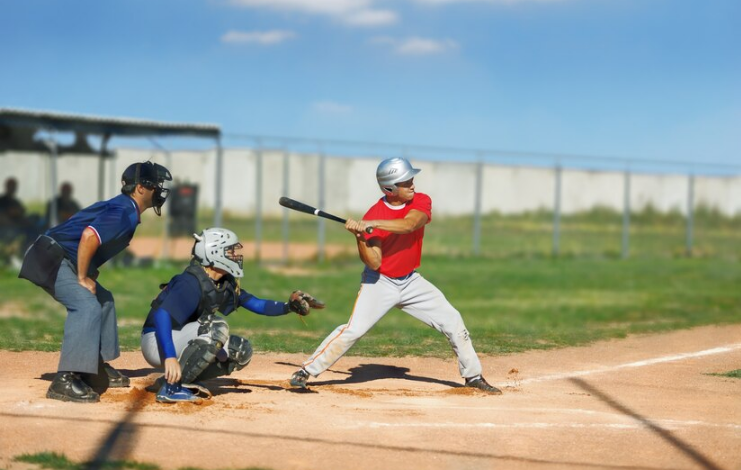Beyond the Pitch: Overhead Throwing Analysis for Injury Prevention in Athletes

I. Introduction
Overhead throwing is an essential movement in numerous sports, including baseball, softball, cricket, and many others. Whether it’s launching a baseball across the diamond with precision, hurling a cricket ball down the pitch, or executing a powerful pitch in softball, the mechanics of overhead throwing are critical components of these sports.
However, within the mechanics of these athletic motions lie risks – the prevalent threat of injuries. Athletes engaging in overhead throwing maneuvers often encounter a spectrum of injuries, ranging from minor strains to more severe ligament tears or shoulder impingements. These injuries, stemming from the repetitive and forceful nature of overhead throwing, can sideline athletes and impact their performance and long-term health.
Hence, the purpose of this blog is to delve into the intricate biomechanics underpinning overhead throwing while spotlighting effective strategies aimed at injury prevention. By exploring the nuances of throwing mechanics and understanding the vulnerabilities that predispose athletes to injuries, this blog aims to provide insights and actionable methods for athletes, coaches, and healthcare professionals to minimize these risks and optimize athletic performance.
II. Understanding Overhead Throwing Mechanics
Throwing something overhead involves using many parts of the body together. It’s like a team effort where each part has its job to make a strong and accurate throw.
First, there are different steps to throwing. It starts with getting ready (windup), then positioning the arm (cocking), followed by a quick movement forward (acceleration). After that, it’s important to slow down the arm (deceleration) and finish the movement smoothly (follow-through).
The shoulder, elbow, hips, and trunk all work together during these steps. The shoulder allows lots of movement and stability, the elbow helps transfer energy, the hips create spinning power, and the trunk connects everything, passing energy between these body parts. This teamwork makes overhead throwing a complicated but coordinated process.
III. Common Injuries Associated with Overhead Throwing
When athletes throw overhead repetitively, they can get certain injuries. These injuries include tears in the rotator cuff, tears in a part of the shoulder called the labrum, and issues with the UCL in the elbow. These injuries are quite common among athletes who do a lot of overhead throwing.
Statistics show that many athletes, especially those in sports like baseball and softball, often have these kinds of injuries.
These injuries can happen because of a few reasons. Doing the same throwing motion over and over again (overuse) is a big reason. Also, if the throwing technique isn’t good (poor mechanics), it can lead to injuries. Sometimes, not being in good shape or having weak muscles (lack of conditioning) can also contribute to these injuries. It’s important to understand these factors to prevent injuries in athletes who throw overhead a lot.
IV. Biomechanical Analysis for Injury Prevention
Analyzing biomechanics for injury prevention involves looking at how the body moves during overhead throwing. Here’s a simplified breakdown of how it’s done:
- Movement Observation: Professionals watch athletes perform overhead throws to understand their movements. They pay attention to how the body works, including the arms, shoulders, hips, and more.
- Video Analysis: Recording the throwing motion helps experts study it closely. They can pause, slow down, or zoom in on specific parts to spot any issues or areas that could cause injuries.
- Biomechanical Tools: Some use special tools to measure body movements. These tools, like sensors or motion capture devices, give precise data about how the body moves during throwing.
- Identifying Problems: Experts look for problems in the throwing technique. They check if movements are too forceful or if certain body parts are strained more than they should be.
- Corrective Measures: Once issues are found, experts suggest ways to fix them. It could involve adjusting throwing techniques or doing specific exercises to strengthen certain muscles.
V. Injury Prevention Strategies
Injury prevention strategies are like a playbook to keep athletes safe while they’re throwing overhead. Here are some simple but important ways to prevent injuries:
- Proper Warm-Up: Before throwing, athletes should warm up their muscles. It’s like getting the body ready for action, reducing the chances of injury.
- Technique Check: Learning the right way to throw is crucial. Coaches or experts can help athletes with proper techniques to reduce stress on their bodies.
- Strengthening Exercises: Doing exercises that make muscles strong is a big help. Athletes focus on exercises that specifically strengthen the muscles used for throwing.
- Rest and Recovery: Taking breaks between throwing sessions is key. It gives the body time to recover and prevents overuse injuries.
- Listen to Your Body: Athletes should pay attention to any pain or discomfort. If something doesn’t feel right, it’s important to take a break and get it checked.
- Proper Gear: Using the right equipment, like gloves or supportive braces, can protect the body while throwing.
VI. Technology and Tools for Analysis
Biomechanical analysis relies on advanced technologies like:
● Motion Capture: Uses cameras and sensors to track body movements in 3D, providing precise data on an athlete’s motion.
● Wearable Sensors: Small devices worn by athletes that measure movement and forces in real time, offering immediate feedback.
● Force Plates: Placed on the ground to measure forces exerted by an athlete’s feet, aiding in assessing weight distribution and balance.
● Electromyography (EMG): Measures muscle activity by detecting electrical signals, identifying muscle engagement during movements.
These tools assist by:
● Precision Identification: Offering accurate data to pinpoint even subtle movement issues or imbalances in mechanics.
● Real-Time Feedback: Providing instant insights, allowing adjustments to be made immediately during training sessions.
● Tailored Corrections: Enabling coaches to create specific exercises and adjustments based on detailed data, addressing individual mechanics.
● Objective Decision-Making: Guiding coaches and athletes by providing quantifiable data, aiding in prioritizing areas for improvement.
VII. Case Studies and Success Stories
Case Study 1: Baseball Pitcher’s Recovery
Injury: Rotator cuff tear, hindering pitching performance.
Approach: An elite baseball pitcher underwent aquatic therapy as a crucial part of his rehabilitation program. The therapy included water-based exercises focused on shoulder mobility and strengthening, reducing strain on the injured area while allowing gradual progression.
Success Story: By integrating aquatic therapy with a structured recovery plan, the pitcher gradually regained shoulder strength and mobility. The buoyancy of water reduced joint stress, enabling early movement without excessive strain. Eventually, he returned to pitching with improved mechanics, thanks to specific adjustments learned in the water that carried over to his throwing motion.
Case Study 2: Softball Player’s Injury Prevention
Prevention Focus: A softball pitcher wanted to prevent common overuse injuries associated with repetitive throwing.
Approach: Adopted aquatic therapy as a preventive measure. Incorporating underwater throwing drills and specific strengthening exercises in the pool helped diversify the training routine while reducing the repetitive stress on muscles and joints.
Success Story: Through consistent aquatic therapy sessions, the pitcher improved her throwing endurance and mechanics. The water-based workouts allowed her to maintain fitness levels while reducing strain, effectively preventing overuse injuries during the season.
VIII. Conclusion
Proper mechanics during overhead throwing stand as a linchpin in preventing injuries among athletes. The intricacies of body movements, when aligned correctly, significantly reduce the risk of common throwing-related injuries. Understanding and refining these mechanics are pivotal for sustaining athletes’ longevity and performance on the field.
Encouragement for Athletes to Prioritize Biomechanical Analysis and Injury Prevention
Athletes, your well-being is paramount. Prioritizing biomechanical analysis offers a pathway to enhanced performance and injury resilience. Embracing techniques tailored to prevent injuries ensures sustained participation in your sport of choice, safeguarding your physical health and future prospects in athletics.
Final Thoughts on Choosing Total Performance
Total Performance stands as an exemplary choice for athletes seeking comprehensive injury prevention strategies. With a demonstrated commitment to biomechanical analysis and cutting-edge techniques, Total Performance places the athlete’s well-being at the forefront. Their tailored programs, including aquatic therapy, demonstrate an understanding of the evolving landscape of injury prevention in sports. By choosing Total Performance, athletes invest in a holistic approach to injury prevention, nurturing their athletic pursuits while prioritizing long-term health and success on the field.




